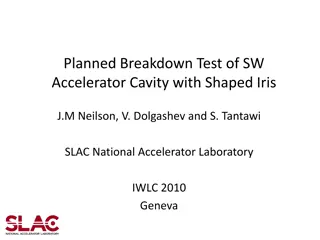Managing Intraoperative Floppy Iris Syndrome in Cataract Surgery
Effective management of intraoperative floppy iris syndrome in cataract surgery involves specific maneuvers such as reducing aspiration flow rate, using mechanical iris expansion devices, and avoiding large or posterior incisions. This condition is characterized by progressive pupil constriction, iris billowing, and iris prolapse, with potential association with pre-surgical pupil dilation. Detailed feedback and references provided for further information.
Uploaded on Oct 04, 2024 | 0 Views
Download Presentation

Please find below an Image/Link to download the presentation.
The content on the website is provided AS IS for your information and personal use only. It may not be sold, licensed, or shared on other websites without obtaining consent from the author.If you encounter any issues during the download, it is possible that the publisher has removed the file from their server.
You are allowed to download the files provided on this website for personal or commercial use, subject to the condition that they are used lawfully. All files are the property of their respective owners.
The content on the website is provided AS IS for your information and personal use only. It may not be sold, licensed, or shared on other websites without obtaining consent from the author.
E N D
Presentation Transcript
Quarterly Questions Sample Question Sample Question
A patient presenting for cataract surgery is on tamulosin. Which of the following intraoperative maneuvers is most likely Sample Question How would you answer this? Remember, you have 60 seconds to select from the choices listed. Place your screenshot here to decrease the effects of intraoperative floppy iris syndrome? A. B. C. D. Enlarging the corneal incision Placing incremental atropine Creating iris sphincterotomies Reducing the aspiration flow rate 2
A patient presenting for cataract surgery is on tamulosin. Which of the following intraoperative maneuvers is most likely to decrease the effects of intraoperative floppy iris syndrome? The platform will tell you instantly how you did. Place your screenshot here Enlarging the corneal incision Placing incremental atropine Creating iris sphincterotomies Reducing the aspiration flow rate A. B. C. D. Your answer is CORRECT. 3
Key Point: Intraoperative maneuvers to help reduce the effects of floppy iris syndrome include reducing the aspiration flow rate and vacuum, use of The platform also provides detailed feedback. Place your screenshot here mechanical iris expansion devices, placement of intracameral epinephrine, use of highly retentive viscoelastic, and avoiding an incision that is too large or too posterior (to reduce risk of iris prolapse). The key point addresses the subject matter knowledge necessary to answer the question correctly. 4
Critique: Intraoperative floppy iris syndrome is a characterized by the triad of 1) progressive pupil constriction during surgery, 2) billowing of the The critique (discussion) explains why the correct answer is the best choice, followed by reasons the other choices are not appropriate. Place your screenshot here iris, and 3) tendency for iris prolapse into the phacoemulsification and side port incisions during surgery. This triad may or may not be associated with a poorly dilated pupil before surgery 5
References: Chang, DF, Osher RH, Wang L, Koch DD. Prospective multicenter evaluation of cataract surgery in patients taking tamsulosin (Flomax). Clickable references to further information about the content of the question are available. Place your screenshot here Ophthalmology 2007;114:957- 964. Flach, A. Intraoperative floppy iris syndrome: Pathophysiology, Prevention and Treatment. Trans Am Ophthalmol Soc 2009;107:234- 39. 6























